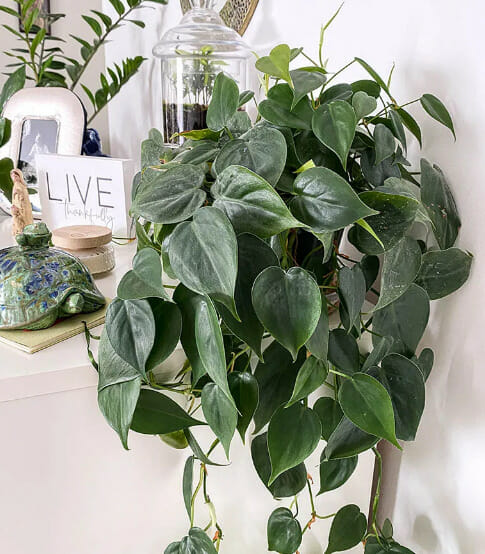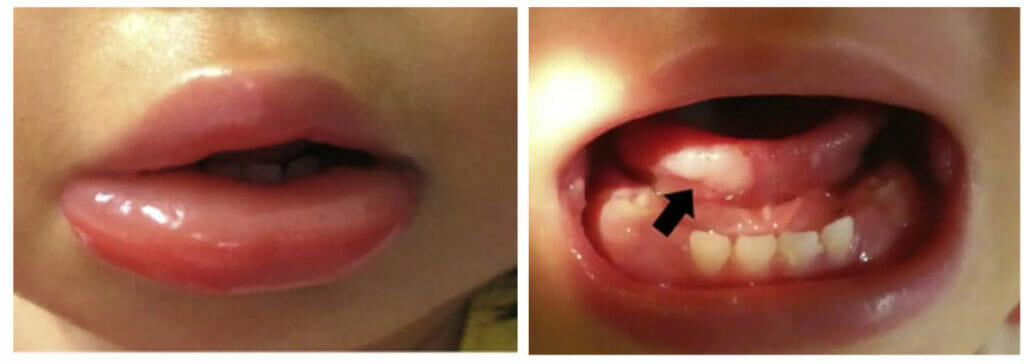Almost every home has at least one or two plants that are kept indoors. They make the room more cheerful, help clean the air, and have been shown to reduce feelings of stress and depression; in addition, many people find that tending to plants is a calming activity in and of itself. Philodendrons are popular houseplants that are recognized for the distinctive foliage that they produce. However, if you have cats or dogs living in the house, you might be concerned about the toxicity of philodendrons as you don’t want to cause harm to either your plant or your pets. This article will guide you about philodendron poisoning treatment.

1. What Is Philodendron?
The Philodendron is a tropical plant with huge leaves that can vary in form and size. As a result of the foliage’s low maintenance requirements, it is a common choice for a houseplant. The leaves are bold and vibrant green, which may stimulate the curiosity of canines and other pets. This plant does best in light to moderate sunlight and should be maintained at a distance of at least 7 feet from any window. It just needs an inch of water each week, but because its leaves and stems may grow relatively large, its owners may need to support it with stakes or prune it.
Also Read: Is Philodendron a Good Indoor Plant?
Also Read: Different Philodendron Varieties That Are Common As Houseplants
1.1. Calcium Oxalate Crystals in Philodendron
Crystals of insoluble calcium oxalate may be found throughout the plant’s leaves and stems, where they serve as a form of natural defense. When the leaves of a Philodendron are damaged, such as when animals nibble on them, the plant protects itself by creating crystals known as raphides, which are incredibly sharp.
1.2. Are Philodendrons Poisonous?
Since it contains calcium oxalate crystals, Philodendron is a poisonous plant. Whether the plants are grown inside or outdoors, in containers, or directly in the ground, the potential for harming people and their canine companions is high. Every component of the Philodendron plant, including the leaves, is toxic.
When Philodendron is chewed, the crystals of calcium oxalate that are contained inside it are liberated. Hoarseness, diarrhea, mouth sores, a burning feeling, and irritated skin and eyes can be brought on by contact with the sap. Any part of the plant is capable of becoming crystallized with insoluble oxalic acid and calcium. Because of this, it is strongly advised that the entire Philodendron plant be stored in a secure location that is out of the of both children and pets.

2. Philodendrons Plants: Toxicity to Babies
The pain from touching Philodendron sap keeps babies and young children from eating it. Still, kids won’t stop sticking their fingers in their mouths if you tell them not to.
Oxalate crystals cause skin irritation when they come into contact with it. Besides these, you could also experience nausea, dizziness, headaches, a raspy voice, and even death. Ensure your kid washes their hands before eating to prevent Philodendron poisoning.
2.1. Symptoms of philodendron poisoning in babies
If any part of the plant is chewed on or swallowed, it can cause
- Immediate discomfort
- Burning sensation,
- Swelling of the lips, mouth, tongue, and neck.
- Nausea
- Diarrhea
- Difficulty breathing
- Contact dermatitis
- Eye irritation.

2.2. Philodendron Poisoning Treatment in Babies?
Poisoning from a plant containing oxalate is unusual since acute mouth irritation often deters children from eating a significant portion of the plant.
If any young child accidentally ingests any part of an oxalate-containing plant, follow this philodendron poisoning treatment:
- Give water to gargle with and something cool to drink or snack on, like a popsicle, applesauce, or yogurt.
- Give your lots of water or milk to drink. The calcium in the milk binds the oxalate crystals and helps in breaking them down.
- Wash the baby’s hands and eyes so they don’t touch again.
- If the swelling is so bad that the child can’t breathe or eat, or if it’s preventing him from swallowing, you should get him to the local emergency room immediately.
- It can be excruciating and even dangerous to contact the plant’s secretions, which can cause severe burning and swelling. Keep the affected region lathered with soap and warm water continuously to reduce swelling.
- Please take your child to the doctor if the pain persists.
3. Philodendrons Plants: Toxicity to Pets
If swallowed, philodendrons have the potential to cause vomiting, diarrhoea, and even death in animals. Because of this, it is extremely important to keep philodendrons out of the reach of animals and never give them access to the plant itself. Symptoms of poisoning often manifest themselves 30 minutes to two hours after consumption and can last up to 72 hours. If you believe your pet has consumed a philodendron, do not hesitate to contact a qualified veterinarian.
Philodendrons are among the most well-known houseplants, yet despite their popularity, they are also among the riskiest. The leaves also called fiddle leaf figs, are poisonous due to the presence of calcium oxalate crystals. It is impossible to die by ingesting a fiddle leaf as an adult; nevertheless, all philodendrons, including fiddle leaves, pose a significant risk to children and dogs.
3.1. Signs of Philodendrons Poisoning In Pets
Calcium oxalate, a crystal-like substance emitted by philodendrons, is toxic to your pet dog or cat. Your dog’s lips might enlarge and get irritated from the poison. You may come across signs such as:
- Vomiting
- Soreness in the mouth
- Intense saliva production
- Tapping or pawing at the mouth of a cat or dog
- In its crystal form, the toxin can cause injuries to the mouth and even the skin of animals.
- Your pet may be poisoned if it eats any part of the plant containing this toxin.

3.2. Philodendron Poisoning Treatment in Pets:
- Rinse the mouth and the eyes with clean, cold water to eliminate as much calcium oxalate substance as is humanly feasible.
- Give your pet milk to drink.
- Take your pet to the local animal hospital or veterinary clinic as soon as possible. Time is of the essence. Your pet may require pain medicine, anti-inflammatory drugs, pharmaceuticals to help bind any residual plant material in the gastrointestinal tract, and nutritional aid in intravenous fluids and food until they are comfortable enough to eat on their own. If this is the case, they will also need restorative treatment.
3.3. Which pets are most vulnerable to philodendrons?
Animals have no idea which everyday household items or plants may harm them. They could enjoy a playful bite on your Philodendron, curious and completely harmless. Animals like cats and dogs should not be allowed around the philodendrons. Philodendrons are highly poisonous plants that should not be kept as houseplants with any pet. One or two leaves nibbled on by your pet probably won’t affect much.
Growing philodendrons in an aquarium is a popular idea. While philodendrons cannot flourish in the water, their roots are quite hardy. Leaves of the Philodendron should not be submerged in the aquarium’s water, but the plant itself poses no threat to the fish. However, several kinds of Philodendrons would do quite well in a home aquarium. The Philodendron needs special care when being nurtured in an aquarium.
4. How To Keep Away Children and Pets From Philodendron
Children and pets are curious by nature, and they can’t resist touching the green leaves. The best solution is to put the plant out of their reach. You can decorate your walls with shelves and place the Philodendron on shelves on them. Moreover, you can train your plants that touching and eating the plant leaves is not a healthy habit. If you involve your kids in potting and reporting, it can minimize their curiosity and develop their love of plants.

5. Sum Up:
With proper care and precautions, you can have a beautiful collection of philodendrons in your indoor space. We hope this article will help you if you encounter such a sad incident of philodendron poisoning in your pets or babies. For more articles, follow our website.
